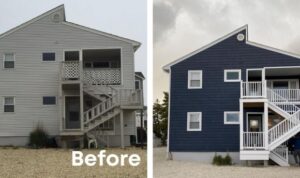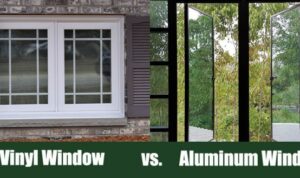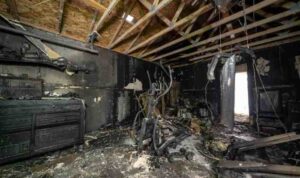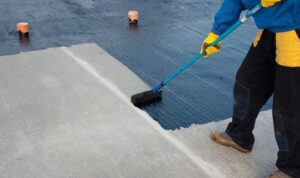Diving into the realm of siding roofing contractors, this introduction sets the stage for a fascinating exploration of their crucial role in the construction industry. With a focus on the importance of their work and the skills required, readers are invited to uncover the intricacies of this profession.
Furthermore, the discussion will delve into the materials, techniques, and safety practices employed by siding roofing contractors to ensure the structural integrity and safety of buildings.
Importance of Siding Roofing Contractors
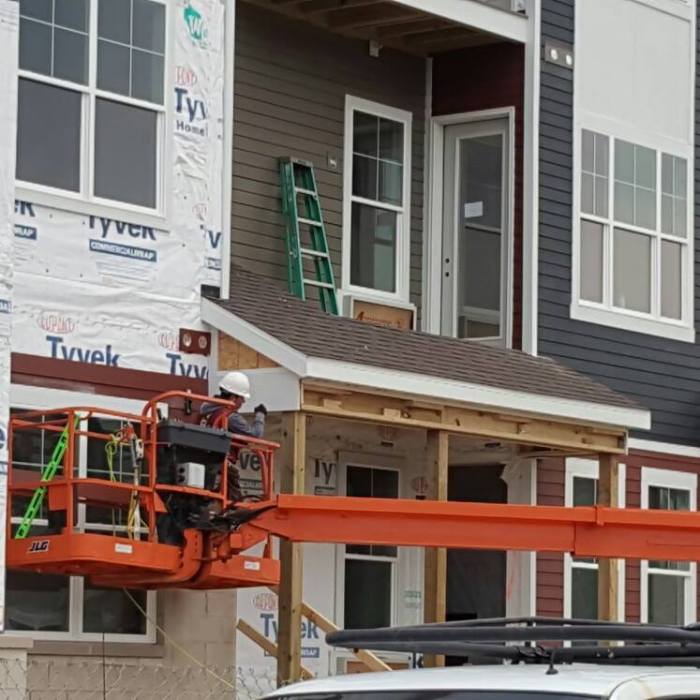
Siding roofing contractors play a crucial role in the construction industry by providing expertise in installing and repairing the exterior coverings of buildings. They are responsible for ensuring that the roof and siding of a structure are properly installed, maintained, and repaired to protect the building from external elements.
Professional siding roofing contractors contribute to the overall structural integrity of a building by using their skills and knowledge to prevent water leaks, mold growth, and other issues that can compromise the safety and durability of a structure. They work with various materials such as shingles, tiles, metal, vinyl, and wood to create a protective barrier against weather conditions and external threats.
Examples of Situations Requiring Professional Siding Roofing Contractors
- During new construction projects, hiring professional siding roofing contractors is essential to ensure that the roof and siding are installed correctly from the beginning, preventing future issues.
- After severe weather events such as storms or hail, it is crucial to enlist the expertise of siding roofing contractors to assess and repair any damage to the roof and siding promptly.
- When planning to replace or upgrade the existing roof or siding of a building, professional contractors can provide guidance on the best materials and techniques to enhance the structure's longevity and aesthetics.
Skills and Qualifications
Becoming a successful siding roofing contractor requires a specific set of skills and qualifications that are essential for the job. Let's explore the key requirements needed in this profession.
Essential Skills and Qualifications
To excel as a siding roofing contractor, individuals must possess the following skills and qualifications:
- Knowledge of construction materials and techniques
- Ability to read and interpret blueprints
- Proficiency in using various tools and equipment
- Strong attention to detail
- Excellent communication and teamwork skills
- Physical stamina and strength
- Understanding of building codes and safety regulations
- Experience in roof repair and installation
Comparison with Other Construction Professionals
While siding roofing contractors share some skills with other construction professionals, such as knowledge of materials and tools, they also require specialized expertise in roof repair and installation. Unlike general contractors who oversee various aspects of construction projects, siding roofing contractors focus specifically on roofing tasks.
Importance of Ongoing Training and Certifications
Continuous training and certifications are crucial for siding roofing contractors to stay updated on industry trends, new technologies, and safety protocols. By pursuing further education and certifications, contractors can enhance their skills, credibility, and job prospects in a competitive market.
Materials and Techniques

When it comes to siding and roofing projects, the materials used and the techniques employed play a crucial role in the overall quality and longevity of the installation. Siding roofing contractors need to be well-versed in a variety of materials and techniques to ensure that they can deliver the best results for their clients.
Types of Materials
- Vinyl: Vinyl siding is a popular choice for its durability, low maintenance, and cost-effectiveness. It comes in a wide range of colors and styles, making it a versatile option for many homeowners.
- Wood: Wood siding offers a natural and traditional look to a home. While it requires more maintenance compared to vinyl, it can add warmth and character to the exterior of a house.
- Fiber Cement: Fiber cement siding is a durable and long-lasting option that can mimic the look of wood or stucco. It is resistant to rot, fire, and pests, making it a popular choice for many homeowners.
Installation Techniques
- Proper Preparation: Before installing siding or roofing, contractors need to ensure that the surface is clean, dry, and free of any debris. This helps to ensure a smooth installation and prevents any issues down the line.
- Flashing: Proper flashing installation is essential to prevent water leakage and damage. Contractors need to pay close attention to details when installing flashing around windows, doors, and other openings.
- Nailing and Fastening: Using the correct nails and fasteners, as well as following manufacturer guidelines for spacing and placement, is crucial for a secure and long-lasting installation.
Choosing the Right Materials and Techniques
It is important for siding roofing contractors to assess the specific needs and requirements of each project before selecting materials and techniques. Factors such as climate, budget, and desired aesthetic should all be taken into consideration to ensure the best results for the client.
Safety Practices
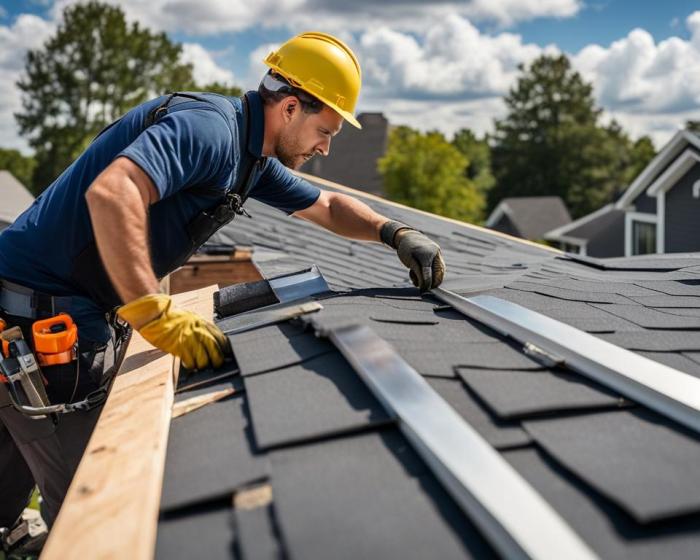
When it comes to siding and roofing work, safety is paramount for contractors to ensure not only their well-being but also the successful completion of the project. Let's delve into the safety protocols, risks, and equipment used by siding roofing contractors.
Safety Protocols
Siding roofing contractors must adhere to strict safety protocols on job sites to prevent accidents and injuries. This includes conducting regular safety inspections, providing proper training to all workers, and ensuring the use of personal protective equipment (PPE) at all times.
- Workers are required to wear hard hats, safety goggles, gloves, and non-slip footwear to protect themselves from falling debris and slippery surfaces.
- Fall protection systems such as harnesses, lanyards, and guardrails are used when working at heights to prevent falls and injuries.
- Proper scaffolding and ladder safety procedures are followed to minimize the risk of falls and ensure stable working platforms.
Risks and Mitigation
The risks associated with siding and roofing work include falls, exposure to hazardous materials, electrical hazards, and accidents involving heavy machinery. Contractors mitigate these risks by implementing safety measures such as regular safety training, hazard assessments, and emergency response plans.
- Regular safety training ensures that workers are aware of potential hazards and know how to safely operate equipment and tools.
- Hazard assessments are conducted to identify and eliminate potential risks before starting work, reducing the likelihood of accidents and injuries.
- Emergency response plans Artikel procedures for dealing with accidents, injuries, and other unforeseen events to ensure a quick and effective response to emergencies.
Safety Equipment
Siding roofing contractors utilize a variety of safety equipment to protect themselves and their workers while on the job. This equipment is essential for ensuring a safe work environment and preventing accidents.
- Personal protective equipment (PPE) such as hard hats, safety goggles, gloves, and hearing protection are worn by workers to prevent injuries from falling objects, debris, and loud noises.
- Fall protection systems including harnesses, lanyards, and anchor points are used when working at heights to prevent falls and ensure worker safety.
- Scaffolding and ladder safety equipment such as guardrails, stabilizers, and ladder brackets are employed to provide stable working platforms and prevent falls.
Last Word
In conclusion, siding roofing contractors play a vital role in the construction world, combining expertise, skills, and safety measures to deliver high-quality results. By understanding the significance of their work and the dedication they bring to each project, we gain a newfound appreciation for the craftsmanship behind every building's exterior.
Common Queries
What are the primary skills required to become a successful siding roofing contractor?
Key skills include knowledge of construction materials, expertise in installation techniques, and the ability to work at heights safely.
How do siding roofing contractors ensure safety on job sites?
Contractors follow strict safety protocols, use protective equipment like harnesses, and undergo regular training to mitigate risks.
What types of materials are commonly used by siding roofing contractors?
Common materials include vinyl, wood, fiber cement, and metal for siding, while roofing materials range from asphalt shingles to metal roofing.

